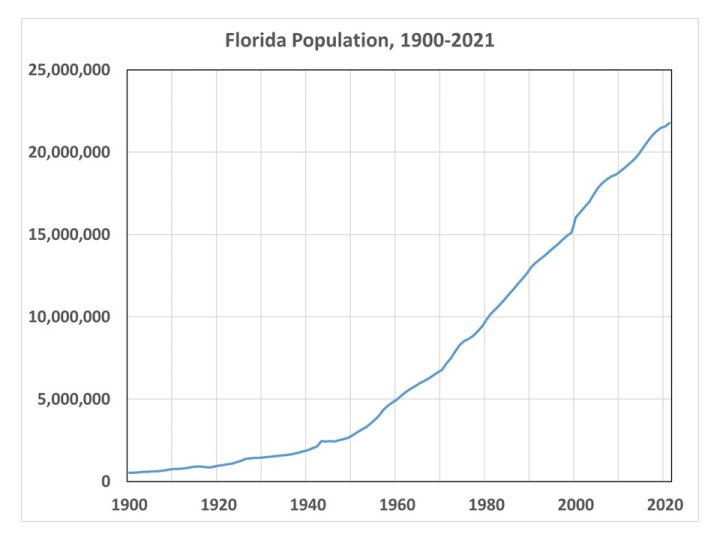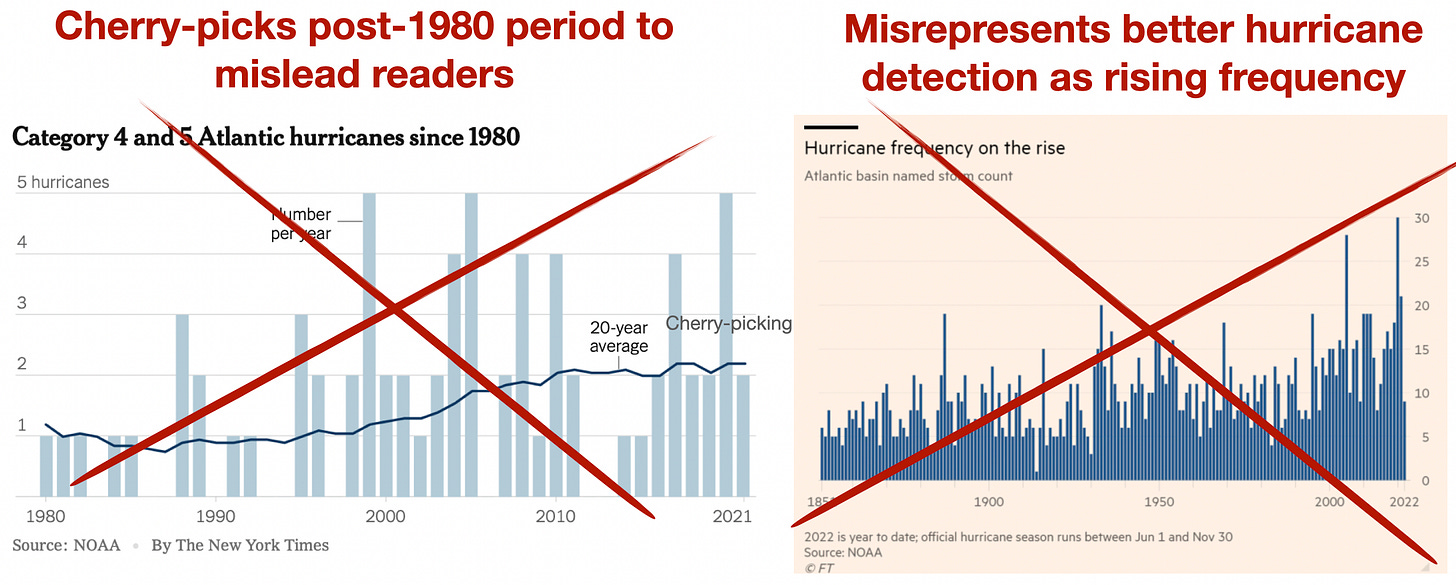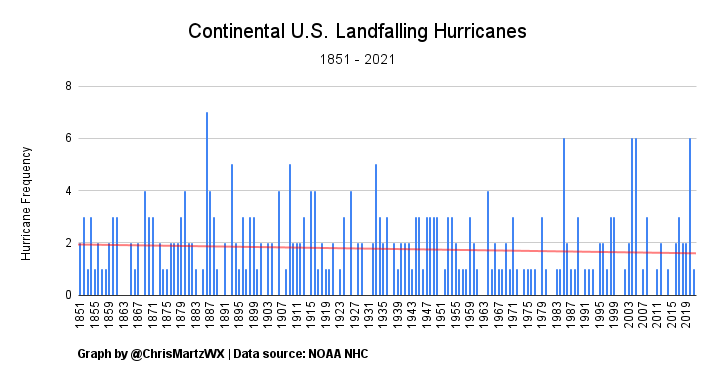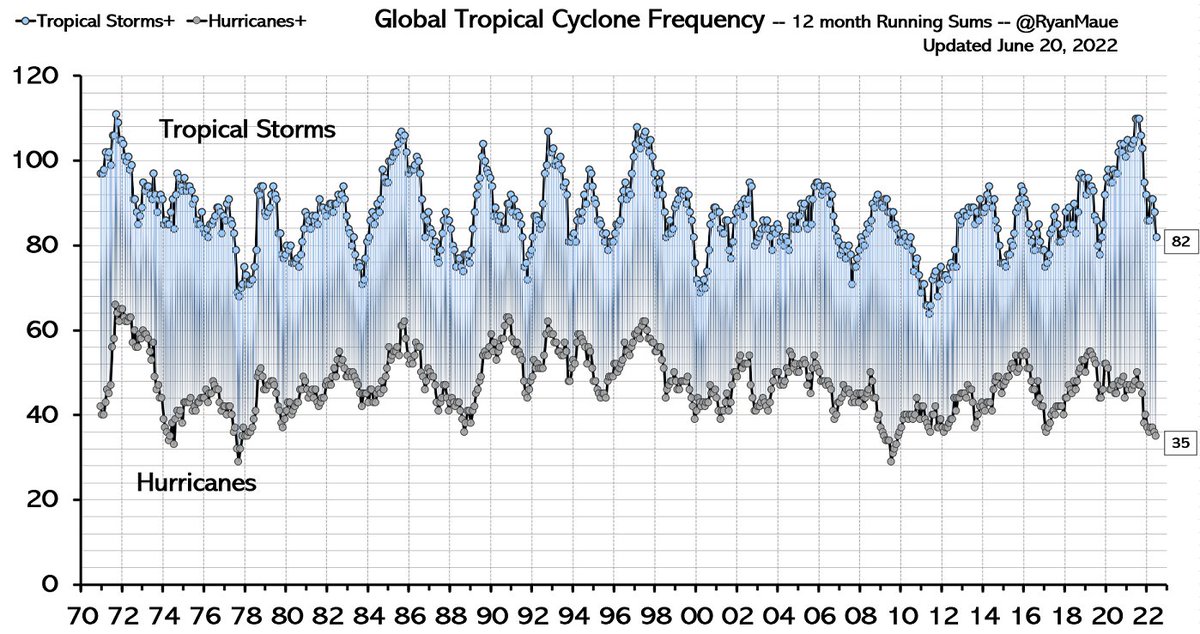NOAA official to CNN’s Don Lemon: No, ‘climate change’ is not responsible for Hurricane Ian
Climate scientist Mika Brzezinski (@morningmika) reports: "Hurricanes in the Atlantic have become more intense, partly driven by higher sea surface temperatures linked to human-caused climate change." pic.twitter.com/pFN72GDbgO
— Tom Elliott (@tomselliott) September 29, 2022
Climate scientist Admiral James Stavridis (@stavridisj): "You know more [hurricanes] are coming, you know we’re going to be dealing with this, as a nation, going into the future, if we can’t get climate under control." pic.twitter.com/YKZkNytjot
— Tom Elliott (@tomselliott) September 29, 2022
Climate scientist @JoyAnnReid: "There is a lot that has changed about the Earth that has made these things worse, right? I mean, these things are thriving because the water is getting warmer … There’s just no doubt, I think, left that it is feeding these beasts.” pic.twitter.com/JfsfsYD47w
— Tom Elliott (@tomselliott) September 29, 2022
#
Reality Check:
From Dr. Roy Spencer’s Global Warming Blog
September 29th, 2022 by Roy W. Spencer, Ph. D.
With Hurricane Ian (now a tropical storm) exiting the east coast of Florida, there is no shortage of news reports tying this storm to climate change. Even if those claims actually include data to support their case, those data are usually for cherry-picked regions and time periods. If global warming is causing a change in tropical cyclone activity, it should show up in global statistics.
The latest peer-reviewed study (March 2022, here) of the accumulated wind energy in tropical cyclones since 1990 (when we started have sufficient global data) showed a decrease in hurricane activity. There was an increase in Atlantic activity, but this was matched by an even larger decrease in Pacific activity, due to a shift from El Nino to La Nina conditions during that time.
So, yes, there is climate change involved in the uptick in Atlantic activity in recent decades. But it’s natural.
Looking at just the numbers of global hurricanes since 1980, we see no obvious trends.

Even if we did see an increase, the improvements in global satellite monitoring would be responsible for some of that. It is impossible to talk about meaningful global statistics (especially trends) before the 1980s due to a lack of satellite data. Ships of opportunity are insufficient for trend calculations, especially since ships try to avoid storms, not sample them.
A document-based study of hurricanes impacting the Lesser Antilles since the last 1600s found a downward trend (not statistically significant) in hurricane activity during 1690-2007.
In my 2017 Kindle book Inevitable Disaster: Why Hurricanes Can’t Be Blamed on Global Warming, I looked at major hurricane landfalls in Florida, which showed no trends. With Hurricane Ian and Michael (2018) added to the dataset, there is still no statistically significant trends in either intensity or frequency of landfalling major hurricanes in Florida.

Of course hurricane damages have increased dramatically during the same period, but this is due to the explosive growth in coastal infrastructure there. Miami had only 444 residents in 1896, and now the metro area has over 6,000,000 population. As seen in the following plot, Florida population has increased by a factor of over 40 since 1900.

Yearly population of Florida, 1900 through 2021.
Given that hurricanes will always be with us, what is the best defense against them? Wealth. Hurricane Ian came ashore with 150 mph sustained winds, but warnings from modern instrumentation and forecast tools led to mass evacuations. At this writing, only 5 deaths have been reported (I’m sure that will rise). Modern building codes help reduce wind damage. I watched storm chaser Reed Timmer live reporting from the eyewall of Hurricane Ian as it made landfall, and I didn’t see any roofs coming off the houses (but I’m sure there were some that did). Damage from storm surge flooding, however, will be extensive and costly.
Yes, even with Ian, Florida hurricane landfalls have decreased over the last 171 years of recordkeeping. As far as major hurricanes go (Category 3-5; max sustained winds ≥111 mph), there has been no trend. pic.twitter.com/HfE2Ha1kOI
— Chris Martz (@ChrisMartzWX) September 29, 2022
Weather expert: U.S. land-falling hurricane frequency since 1851 is NOT following climate claims
Climate alarmists say climate change is why hurricanes, tornados, and droughts are increasing.
But those are NOT increasing, @ClimateDepot explains that and more in the movie @Climate_Hustle 2: pic.twitter.com/gEKmWyAK2b
— John Stossel (@JohnStossel) September 28, 2022
LOL… @MichaelEMann to 'correct' NOAA hurricane chief on causation.
Reminder, Mann falsely claimed to be a Nobel Prize winner multiple times.
If he can't tell the truth about that, I doubt he'll be setting anyone straight about anything else. pic.twitter.com/aP502TFgpD
— Steve Milloy (@JunkScience) September 29, 2022
Excerpt:
Hurricanes
An August 2019 NOAA statement concluded, “It is premature to conclude . . . that global warming has already had a detectable impact on hurricane activity.” The NOAA statement added that U.S. landfalling hurricanes “‘show a slight negative trend’ since ‘late 1800s.’”65
Norwegian professor Ole Humlum explained in his 2020 State of the Climate Report: “Tropical storms and hurricanes have displayed large annual variations in accumulated cyclone energy (ACE) since 1970, but there has been no overall trend towards either lower or higher activity. The same applies for the number of continental hurricane landfalls in the USA, in a record going back to 1851.”67
…
In 2019, extreme-weather expert Roger Pielke Jr. noted that the federal National Climate Assessment released in 2018 ignored one of its own expert reviewers, who wrote: “National Hurricane Center going back to the 1800s data clearly indicate a drop in the decadal rate of US landfalling hurricanes since the 1960s…instead you spin the topic to make it sound like the trends are all towards more cyclones.”68
The WMO (World Meteorological Organization) said, “No observational studies have provided convincing evidence of a detectable anthropogenic influence specifically on hurricane-related precipitation.” The WMO assessment concluded that “anthropogenic signals are not yet clearly detectable in observations for most TC (tropical cyclones) metrics.”69
A study by NOAA hurricane researcher Chris Landsea found that “only 2 of these [recent] 10 Category 5s would have been recorded as Cat 5 if they had occurred during the late-1940s period.”70
Hurricane Maria, which hit Puerto Rico in 2017, with the eighth-lowest landfall pressure (917 MB) on record in the Atlantic Basin, was not an unprecedented storm. Meteorologist Anthony Watts noted, “With Irma ranked 7th, and Harvey ranked 18th, it’s going to be tough for climate alarmists to try connecting these two storms to being driven by CO2/global warming. But they’ll do it anyway.”
Pielke noted in 2019 that the “13 yrs ending 2018 had the fewest Cat 3+ USA landfalls since 1900 with 3….3 periods had 12, most recently 1915–1927. 13 yrs ending in 2018 saw a 14 total Cat 1+ (tied 2nd fewest). The most? 33: 1938–1950.”71
Meteorologist Paul Dorian noted that despite a very active Atlantic hurricane season in 2020, the “Pacific hurricane season was well below normal” and overall global hurricane activity was “below normal.”72
Climate analyst Kenneth Richard’s 2018 survey of scientific literature found, “The peer-reviewed scientific literature robustly affirms that land-falling hurricane frequencies and intensities have remained steady or declined in recent decades. So have droughts, floods, and other extreme weather events.”
Atmospheric research scientist Philip Klotzbach’s research also found no trend in global accumulated cyclone energy (ACE) in the past thirty years.73
…
Not-So-Extreme Weather Events
In 2017 Roger Pielke Jr. of the University of Colorado testified to Congress there was simply “‘no evidence’ that hurricanes, floods, droughts, tornadoes are increasing.”54
A 2020 study by Pielke published in the journal Environmental Hazards found that the “evidence signal of human-caused climate change in the form of increased global economic losses from more frequent or more intense weather extremes has not yet been detected.”55
On nearly every metric, extreme weather is on either no trend or a declining trend on climate timescales. Even the UN IPCC admitted in a 2018 special report that extreme weather events have not increased. The IPCC’s special report found that “there is only low confidence regarding changes in global tropical cyclone numbers under global warming over the last four decades.”56 The IPCC report also concluded “low confidence in the sign of drought trends since 1950 at global scale.”
Pielke testified to Congress on the current state of weather extremes, “It is misleading, and just plain incorrect, to claim that disasters associated with hurricanes, tornadoes, floods, or droughts have increased on climate timescales either in the United States or globally.”
“To date, global observations do not show any significant trends in both the number and the energy accumulated by hurricanes… as claimed in several specific papers for the USA, which report the trend dating back to over 160 years ago, or for other regions of the globe.” pic.twitter.com/4NO6kfknJP
— Kyle Becker (@kylenabecker) September 29, 2022
NYTimes Hurricane Analysis is Purposefully Misleading
There’s no statistical or physical reason to produce a chart or data analysis of only Atlantic hurricanes starting in 1970 or 1980. We have data records going back to the 19th century, with reasonable reliability back to 1945, especially with landfalls.
NOAA: “There is no strong evidence of century scale increasing trends in: U.S. landfalling hurricanes, frequency of hurricanes or major hurricanes, or the proportion of hurricanes that reach major hurricane intensity.”
Meteorologists D’Aleo & Bastardi debunk media claims about Hurricanes with data and history
Meteorologist Joe D’Aleo’s charts show declining Florida hurricane trends:
D’Aleo: “The US hurricane trend like Florida is down.”
Meteorologist Joe Bastardi noted: “There were SIX hurricanes that hit the Southern part of Florida, below a line from Tampa to Cape Canaveral on the Atlantic in the last 57 years. If you look at the prior 50 years, there were SIXTEEN strikes!”
The Financial Times reported that “hurricane frequency is on the rise.”
The New York Times claimed, “strong storms are becoming more common in the Atlantic Ocean.”
The Washington Post said, “climate change is rapidly fueling super hurricanes.”
ABC News declared, “Here’s how climate change intensifies hurricanes.”
Both the FT and N.Y. Times showed graphs purporting to show rising hurricane frequency using data from the U.S. government’s National Oceanic and Atmospheric Administration (NOAA).
All of those claims are false. The increasing cost of hurricane damage can be explained entirely by more people and more property in harm’s way. …






